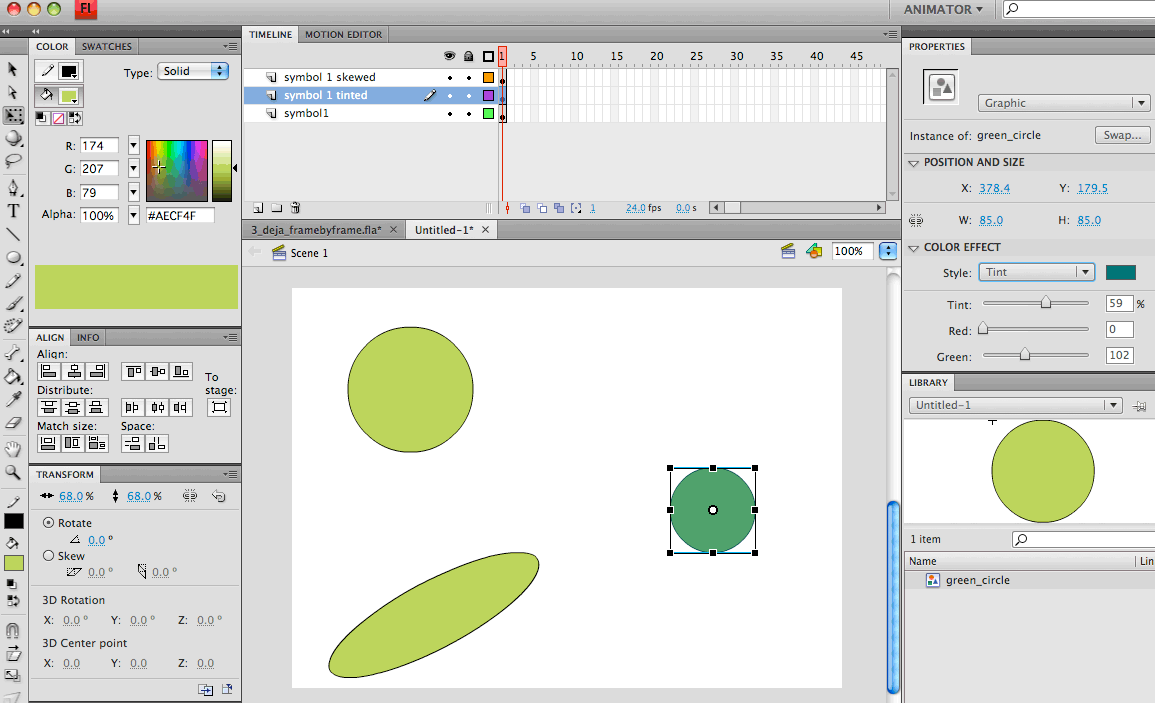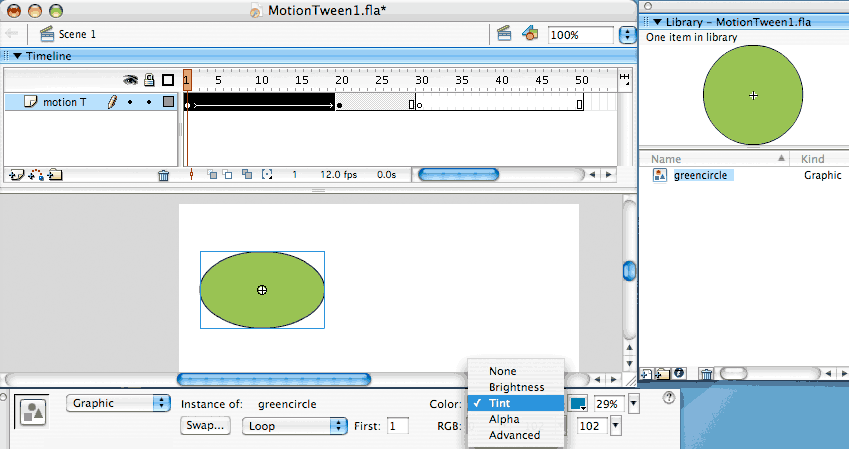A SYMBOL is "a way of saving an element" in Flash that allows you to reuse that element without increasing the File size of your project.
Symbols live in the LIBRARY (Shortcut to open library panel: Apple_L/Contol_L)
Think of them as "the original" of your artwork stored in a safe place in your project.
You can drag "copies" or "clones" of that original to the Stage, where they can get scaled, skewed, rotated, flipped Horizontally or Vertically, even Tinted.
Those copies, living through the Timeline, are called INSTANCES of the symbol.
Although you can make instances look more or less diferent from the original, they always keep a relation or dependency to the "original" living in the Library.
If you alter the "original" element in the Library, all copies or INSTANCES, down on the Stage will get modified accordingly.
 |
"Green circle" is a library element.
In the LIBRARY we see that greencircle is a GRAPHIC SYMBOL .
Greencircle is selected on stage (that's why we see a blue square around it).
The Properties window displays information about the selected item, and we can see that the item on Stage is described as an INSTANCE of the graphic symbol "green circle".
Serious flash projects and flash based websites use all the graphic elements as symbols.
If you keep a graphic element raw (as stroke and fill) or you group it, Flash stores the information EVERY TIME you set a keyframe.
If you use a graphic element as a symbol, flash will point to the original stored in the Library everytime it encounters an instance on a keyframe.
This can mean an enourmus amount of file-size difference.
Remember that the purpose of symbols is reusing them, so to make a character with 5 hands, you will probably re-use the same Hand-symbol 5 times, scaling, tinting and skewing slightly the instances so they look different.
 |
Instances of Symbols placed on Stage can change their appearance by Modifying their color attributes in the Properties window.
It works by percentage (modify it a 20%, 40% or 100%).
You can alter the Brightness of an instance (all the way up to White, all the way down to black)
You can Tint an instance with any color of your palette (you can also write down the RGB value of the Tint-color)
You can modify the Alpha or Transparency, what will make your instance transparent to whatever you have in a layer below (depending on percentage). A Motion Tween of a symbol that has been set to ALPHA=0 in one of the keyframes, will cause an effect of appearing or disapearing on Stage.
You can use the Advanced method when you want to alter the Color and the Alpha at the same time in a keyframe.
If you apply a Motion Tween between 2 keyframes containing different values for that same instance, you will get a smooth transition for the effect.